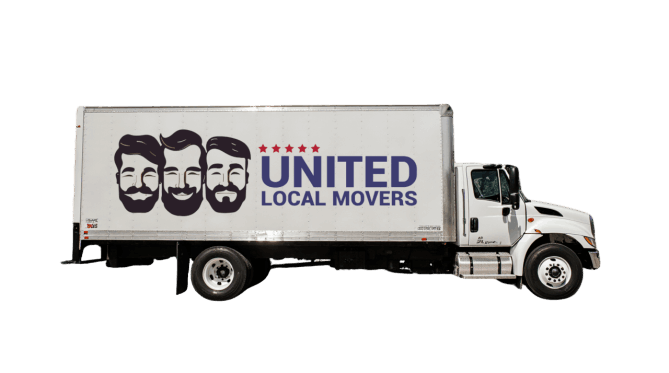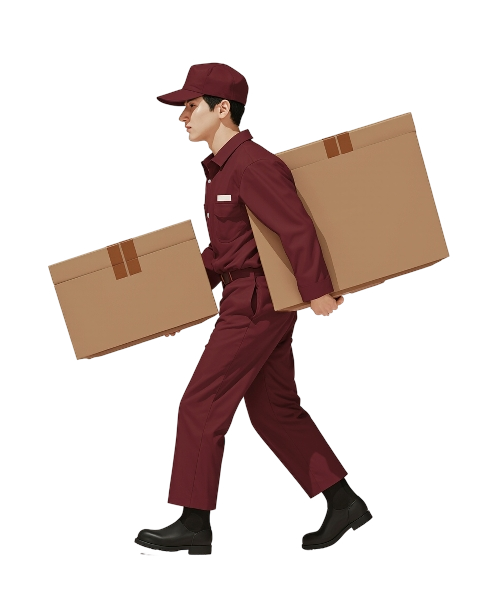Few things are as frustrating as unpacking after a move only to realize you’re missing the screws, bolts, or brackets needed to reassemble your furniture. It’s one of the most common and avoidable moving mistakes — and it can turn a smooth relocation into a stressful scavenger hunt. The good news is that with a bit of organization and communication, you can keep every part and piece right where it belongs.
Whether you’re moving a single bedroom set or a full household, having a clear plan for parts and hardware is key to making your setup on the other end fast and painless.
Why Hardware Bags Get Lost So Easily
During a move, small parts are vulnerable. Movers and homeowners alike are focused on big pieces — couches, mattresses, dressers — and screws or bolts can easily get misplaced. Common reasons for missing hardware include:
- 🧳 Throwing loose parts into random boxes at the last minute
- 🚪 Forgetting to label small bags or containers
- 🛏️ Detaching hardware during disassembly without a plan
- 📦 Movers packing hardware separately from the furniture it belongs to
- 🌀 Bags falling into corners of boxes or sliding under furniture pads
Understanding why it happens is the first step to preventing it.
Best Practice #1: Use Resealable Bags for Every Item
Forget about tossing screws in a box. The simplest way to stay organized is to use clear, resealable plastic bags (like Ziploc or similar). Each bag should contain the hardware for only one item.
- 📎 One bag per bed frame, dresser, TV stand, or piece of furniture
- 📝 Add a handwritten label with the item’s name
- 📸 Take a quick photo of the bag and the furniture it belongs to
- 🧊 For fragile hardware, wrap it with soft paper inside the bag
This alone can eliminate 80% of lost parts problems.
Best Practice #2: Label Clearly and Consistently
Labeling isn’t just about writing something on a bag — it’s about making it obvious, even when you’re tired and surrounded by boxes. Use a permanent marker and include:
- 📍 Furniture name or type (e.g., “Master Bed Frame”)
- 📦 Room destination (e.g., “Bedroom 1”)
- 🔩 Description of contents (e.g., “8 bolts + 4 washers + Allen key”)
For added security, write on masking tape stuck to the bag. This prevents ink from rubbing off during transport.
Best Practice #3: Attach the Bag to the Furniture
The safest way to make sure a bag stays with the right item is to physically attach it to the furniture it belongs to. Depending on the surface and shape, you can:
- 📎 Tape the bag to the underside of a tabletop or bed slats
- 🧷 Zip-tie it to a bed rail or frame
- 🪛 Place it inside a drawer or cabinet of the same item
- 📦 Secure it in a taped envelope on the back of a piece
Make sure the attachment won’t damage the surface and is easy to find later.
Best Practice #4: Create a “Hardware Box” or Bin
Some people prefer to centralize all small parts in one labeled container. A hardware box or bin can work well if you’re organized. Use a clear plastic bin or sturdy box with dividers, and:
- 📁 Sort bags by room or item
- 🏷️ Add a large label on the outside: “HARDWARE ONLY — OPEN FIRST”
- 🔐 Keep this box in your personal vehicle or somewhere visible in the truck
- 📸 Take a picture of its contents before sealing it
This method gives you one central place to look when reassembling furniture at your destination.
Best Practice #5: Document Everything With Photos
Photos are your backup plan. Take a quick snapshot of each hardware bag next to the item it belongs to. This way, even if labels get smudged or a bag goes missing, you’ll know what pieces go where.
- 📸 Photograph the disassembled furniture before moving
- 🧾 Keep a photo inventory on your phone or cloud
- 📂 Sort photos by room or item for easy reference
Combining photo documentation with good labeling ensures your hardware stays organized and identifiable.
Best Practice #6: Communicate With Your Movers
Professional movers like United Local Movers are used to handling hardware bags. When they arrive:
- 💬 Tell the crew lead your system for hardware organization
- 📦 Point out which items have attached bags
- 🧭 Show them where the “hardware box” is, if you have one
- 🚫 Ask them not to pack hardware separately from the furniture
Good communication ensures that everyone treats those small but critical bags with the importance they deserve.
Best Practice #7: Keep Critical Pieces With You
For large, expensive, or essential furniture (like your bed or desk), keep the hardware with you during the move. Toss the labeled bags into a backpack, purse, or glove compartment. That way, you know they’re safe.
- 🚙 Ideal for bed frames, cribs, TV mounts, and desks
- 🧳 Keep in a small zippered pouch or binder
- 📑 Optional: include printed photos or assembly instructions
This works especially well for long-distance moves where shipments can get delayed.
Best Practice #8: Check Inventory During Destination Walkthrough
When you arrive at your new home and do your walkthrough, check for all hardware bags immediately. Look:
- 📦 Inside drawers or attached to furniture
- 🧰 In your hardware box or pouch
- 📋 Against your photo inventory
If something is missing, this is the best time to alert the moving crew before they leave.
Best Practice #9: Keep a Small Toolkit Handy
A well-organized hardware system works best when you’re ready to reassemble quickly. Keep a small toolkit accessible:
- 🪛 Screwdrivers and Allen keys
- 🔩 Spare screws and washers
- 📎 Zip ties and masking tape
- 🧰 A multitool for unexpected situations
Label the toolkit “OPEN FIRST” and keep it with your hardware box so everything is easy to find.
Bonus Tip: Color-Coding for Large Moves
If you’re moving a big house or office with lots of hardware bags, color-coding can make a huge difference. Use colored tape or stickers to match hardware to rooms:
- 🔴 Red = Living Room
- 🔵 Blue = Bedroom
- 🟢 Green = Kitchen
- 🟡 Yellow = Office
This helps the crew identify items instantly without reading every label.
Working With a Professional Moving Company
When you hire an experienced company like United Local Movers, they understand how critical small parts can be. Their crews are trained to keep hardware with its matching furniture and handle your items with care from start to finish.
Keeping the Small Stuff Safe for a Smooth Move
It’s easy to overlook screws, bolts, and brackets during a hectic move, but these little pieces can make or break your unpacking process. A few smart steps — labeling, attaching, organizing, and communicating — will save you hours of frustration later. Don’t leave it to chance.
With United Local Movers, your relocation becomes safer, faster, and stress-free — right down to the smallest screw.





